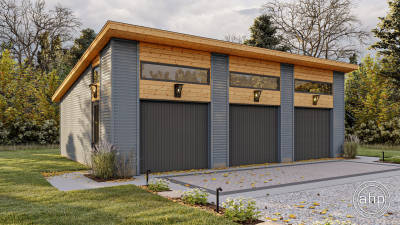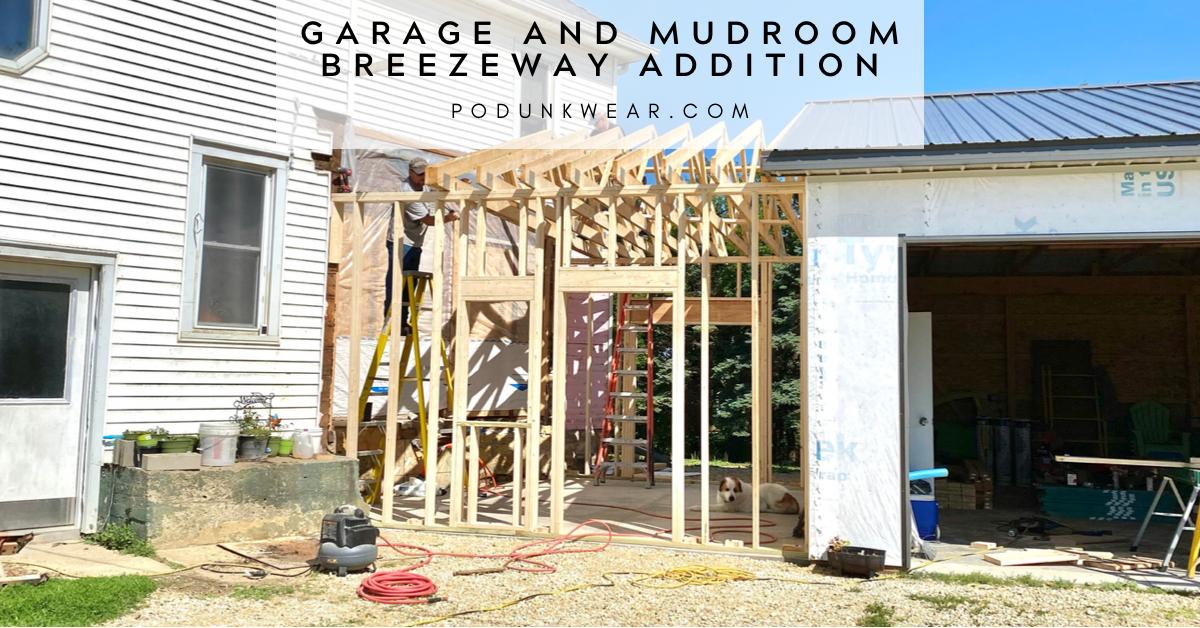
Garage shelving can be a great way to increase your garage's storage capacity. There are many options for garage shelving. However, it's important to choose a unit that will be able to hold the items you need to store in your garage. The right material choice is crucial when selecting a shelving unit. Some materials are more resilient and durable than others, so they are better at resisting spills and stains.
Garage shelving can be built from metal, particle board, or MDF. Particle board is light but more likely to stain than steel. A heavier-duty shelving system may be better suited for heavy items like tools and equipment.
Wall-mounted shelving is a great way of maximising your storage space. Mounted shelves attach to your garage walls via brackets. These brackets are made out of metal and attach to the garage wall studs. The shelves should be mounted at least 16 inches below the floor and 20 inches apart. Ceiling-mounted shelving systems, which project downward, can also be used. They are lightweight, which makes them easier to transport than freestanding units.

Freestanding units may be either metal or wood. They can be mounted to a wall or ceiling. They are more flexible than other types of shelving, though they take up floor space. A drill and some tools are required to install them.
The rail shelves can be made from either steel wire or chrome metal. Vertical metal tracks are installed in the wall and the metal brackets fit into slots. The shelves can be adjusted, so you can add or subtract items as required. Although they are designed to hold heavy objects they can be easily moved to create additional storage space.
Particle board works well for shelving, but it can stain when a can of engine fluid leaks. Metal shelving is nonporous and doesn't absorb chemicals, making it ideal for storing paint and other chemical-based products.
MDF and particle board can be a great choice for those who don't need heavy items to be held, but still want strong structural integrity. Both are sturdy and easy to assemble. In addition, the powder coating on some of these units helps prevent dents and scratches.

MDF and particles board are usually lighter than metal. However, their weight capacities aren't much higher. Plastic shelving is easier to move and cheaper than metal. But you should be aware that plastic is easier to clean than MDF, so it may not be the right choice for a wet, messy, or dusty garage.
An adjustable rail shelf can be another option. This type of shelving is also flexible, but you'll need to find studs on your wall to attach the track to. These shelves won't work well with concrete drywall.
Garage shelving's price will vary depending on what materials are used. Your energy bill can also be affected by the material you choose. Be sure to use a temperature-controlled space if you plan to store food or hazardous materials. You should also cover the shelves to keep spills and stains out.
FAQ
What is the difference between renovation and remodel?
A remodel is major renovation to a room, or a portion of a rooms. A renovation is a minor change to a room or a part of a room. For example, a bathroom remodel is a major project, while adding a sink faucet is a minor project.
Remodeling is the process of changing a room or part of it. A renovation involves only changing a portion of a room. Kitchen remodels can include changing countertops, sinks, appliances and lighting. You could also update your kitchen by painting the walls, or installing new light fixtures.
Why remodel my home when I can buy a brand new house?
Although it is true that houses become more affordable every year, you still pay for the same area. You get a lot more bang than you pay, but that extra square footage is still a significant expense.
Maintaining a house that doesn’t need much maintenance is cheaper.
You can save thousands by remodeling your existing home rather than buying a completely new one.
Remodeling your home will allow you to create a space that is unique and suits your life. You can make your home more welcoming for you and your loved ones.
Are there any savings on a remodel of a bathroom or kitchen.
Remodeling a bathroom or kitchen can be expensive. However, when you consider how much money you pay each month for energy bills, upgrading your home might make more sense.
You could save thousands each year by making a small upgrade. Simple changes such as insulation in ceilings and walls can help reduce cooling and heating costs by up to 30%. Even a minor addition can increase comfort levels and increase the resale value.
It is essential to remember that renovations should be done with durable, easy-to-maintain materials. Solid wood flooring, porcelain tile, and stainless steel appliances last longer than vinyl and laminate countertops and require less maintenance.
You might also find that replacing old fixtures by newer models can reduce utility expenses. For example, installing low-flow showerheads and faucets can lower water usage by up to 50 percent. Compact fluorescent bulbs can be replaced with inefficient lighting to reduce electricity consumption by as much as 75 percent.
How much does it take to tile a bathtub?
If you want to do it yourself, go big. It's an investment to remodel a full bathroom. But when considering the long-term value of having a beautiful space for years to come, it makes sense to invest in quality materials and fixtures.
You can make a big impact on how your room looks. This guide will help you select the right tiles for your project, no matter how small or large.
The first step is to decide what type of flooring you would like to install. There are many options for flooring, including ceramics, porcelain, stone and natural wood. Then, select a style--like classic subway tile or geometric patterns. Choose a color combination.
If you are remodeling a large bathroom, you'll likely need to match the tile with the rest. You may choose white subway tile for your bathroom and kitchen area, but select darker colors for other rooms.
Next, determine the size of the project. Is it time for a small update to the powder room? Would you prefer to add a walk in closet to your master bedroom?
Once you have determined the scope of your project, go to local shops and look at samples. This will allow you to get a feel for how the product is assembled.
You can also shop online to find great deals on porcelain and ceramic tiles. Many retailers offer free shipping and discounts on bulk purchases.
What are the included features in a full remodel of your kitchen?
A complete kitchen remodel is more than just installing a new sink or faucet. You will also need cabinets, countertops and appliances as well as lighting fixtures, flooring, plumbing fixtures, and other items.
A full kitchen remodel allows homeowners to update their kitchens without having to do any major construction. The contractor and homeowner will be able to do the job without any demolition, which makes the project much easier.
A kitchen renovation can include a variety of services such as plumbing, HVAC, painting, drywall installation, and electrical. Depending on how extensive your kitchen renovation is, you may need multiple contractors.
Hiring professionals who are familiar with kitchen remodeling is the best way for it to go smoothly. Small issues can lead to delays when there are many moving parts involved in a kitchen remodel. If you choose a DIY approach, make sure you plan and have a backup plan in place in case things go wrong.
What are the largest expenses when remodeling a kitchen
When planning a kitchen renovation, a few major costs are involved. These include demolition, design fees, permits, materials, contractors, etc. They seem quite small when we consider each of these costs separately. However, when you combine them all, they quickly add-up to become very large.
Demolition is the most costly cost. This includes the removal of old cabinets, countertops, flooring, and appliances. The insulation and drywall must be removed. Finally, you have to replace those items with new ones.
Next, you must hire an architect to draw out plans for the space. The permits will be required to ensure the project complies with building codes. Next, you will need to hire someone to actually build the project.
Finally, once the job is done, you have to pay the contractor to finish the job. You could spend anywhere from $20,000 to $50,000, depending on how large the job is. This is why it's important to get estimates form multiple contractors before hiring one.
Plan ahead to cut down on some of these costs. You may be able to negotiate better deals on materials or even skip some of the work. It is possible to save money and time by knowing what to do.
People often try to install their cabinets themselves. People believe that this will save them money since they won't have to hire professionals for installation. It is often more expensive to have professional installation services. A professional can usually complete a job in half of the time that it would take you.
Another way to save is to purchase unfinished materials. Before purchasing pre-finished materials like cabinets, you must wait until all the pieces are assembled. Unfinished materials can be used immediately by you if purchased. And if something doesn't turn out exactly as planned, you can always change your mind later.
Sometimes, though, it doesn't make sense to go through all of this. Planning is the best way save money on home improvement projects.
Statistics
- 5%Roof2 – 4%Standard Bedroom1 – 3% (rocketmortgage.com)
- About 33 percent of people report renovating their primary bedroom to increase livability and overall function. (rocketmortgage.com)
- 55%Universal average cost: $38,813Additional home value: $22,475Return on investment: 58%Mid-range average cost: $24,424Additional home value: $14,671Return on investment: (rocketmortgage.com)
- Windows 3 – 4% Patio or backyard 2 – 5% (rocketmortgage.com)
- 57%Low-end average cost: $26,214Additional home value: $18,927Return on investment: (rocketmortgage.com)
External Links
How To
How to Remove Tile Grout on Floor Tiles
Most people are unaware of tile grouting. It is used to seal joints between tiles. There are many types available today. Each is used for a specific purpose. We'll show you how we can remove grout from floor tiles.
-
Before you begin this process, it is important to make sure you have all of the necessary tools. It is best to have a grout cutter, grout scraper, and some towels.
-
Now, you will need to remove any dirt or debris from under the tile. The grout cutter can be used to cut the grout and remove any loose tiles. You should not damage any tiles.
-
After you've cleaned up everything, grab the grout scraper to remove any grout. Step 4 can be completed if you have no grout.
-
You can now move on to the next stage after you have completed all your cleaning. Take one of the rags and soak it in water. Make sure the rag has completely soaked in water. When the rag has become soaked, wring it out, so that excess water stays inside the rag.
-
Place the wet rag onto the joint where the tile meets the wall. Continue pressing down on the rag until you see the grout begin to fall apart. Slowly pull down on the rag until it is pulled towards you. Continue pulling it backwards and forwards until all the grout has been removed.
-
Continue repeating steps 4 through 5 until all grout is removed. Rinse the ragout and repeat the process if necessary.
-
After you have removed all grout, rub the tiles with a damp towel. Let dry completely.